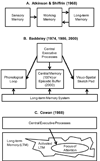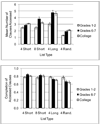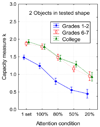Multiple concurrent thoughts: The meaning and developmental neuropsychology of working memory
- PMID: 20721769
- PMCID: PMC2925295
- DOI: 10.1080/87565641.2010.494985
Multiple concurrent thoughts: The meaning and developmental neuropsychology of working memory
Abstract
Working memory can be described as the small amount of information held in a readily accessible state, available to help in the completion of cognitive tasks. There has been considerable confusion among researchers regarding the definition of working memory, which can be attributed to the difficulty of reconciling descriptions from working memory researchers with very different theoretical orientations. Here I review theories of working memory and some of the main issues in the field, discuss current behavioral and neuropsychological research that can address these issues, and consider the implications for cognitive development.
Figures







References
-
- Allen RJ, Baddeley AD, Hitch GJ. Is the Binding of Visual Features in Working Memory Resource-Demanding? Journal of Experimental Psychology: General. 2006;135:298–313. - PubMed
-
- Atkinson RC, Shiffrin RM. Human memory: A proposed system and its control processes. In: Spence KW, Spence JT, editors. The psychology of learning and motivation: Advances in research and theory. Vol. 2. New York: Academic Press; 1968. pp. 89–195.
-
- Awh E, Barton B, Vogel EK. Visual working memory represents a fixed number of items regardless of complexity. Psychological Science. 2007;18:622–628. - PubMed
-
- Baddeley AD. Working memory. Oxford, England: Clarendon Press; 1986.
-
- Baddeley AD, Hitch G. Working memory. In: Bower GH, editor. The psychology of learning and motivation. Vol. 8. New York: Academic Press; 1974. pp. 47–89.
Publication types
MeSH terms
Grants and funding
LinkOut - more resources
Full Text Sources
